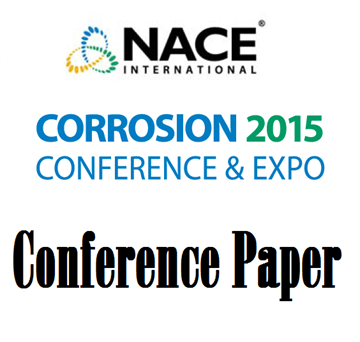Search
Products tagged with '2015 Conference Papers'
View as
Sort by
Display
per page
Corrosion Investigations in Biogas Plants
Product Number:
51315-5878-SG
ISBN:
5878 2015 CP
Publication Date:
2015
$0.00
Corrosion Mitigation Strategies in Forced Oxidation Wet Flue Gas Desulfurization Absorbers Made of UNS S32205 Duplex Stainless Steel
Product Number:
51315-5947-SG
ISBN:
5947 2015 CP
Publication Date:
2015
$0.00
Corrosion of Copper Coils in Computer Air Handlers
Product Number:
51315-5963-SG
ISBN:
5963 2015 CP
Publication Date:
2015
$0.00
Corrosion Performance of TDG Coatings for Marine Bridge Application
Product Number:
51315-5942-SG
ISBN:
5942 2015 CP
Publication Date:
2015
$0.00
Corrosion: The Destructive Stowaway on Marine Vessels Determining the Cost-Benefit of Protecting Marine Coating Systems
Product Number:
41215-930-SG
Publication Date:
2015
$20.00
Creating More Sustainable Industrial Coatings: Driving VOCs of High Performance Waterborne Direct-to-Metal Coatings Below 50 g/L
Product Number:
41215-923-SG
Publication Date:
2015
$20.00
Defining Osmotic Blisters and Causes in Resinous Floor Coatings
Product Number:
41215-898-SG
Publication Date:
2015
$20.00
Design Considerations for Corrosion Protection of Anaerobic Digesters in Wastewater Trestmant Plants
Product Number:
41215-916-SG
Publication Date:
2015
$20.00
Development and Implementation of a Novel Method to Remove Inorganic Zinc Coating from Low Alloy Steel
Product Number:
41215-913-SG
Publication Date:
2015
$20.00
Development of a Slurry Erosion Test standard of Industrial Maintenance Coatings
Product Number:
41215-936-SG
Publication Date:
2015
$20.00
Enhancing the Effectiveness of Food Grade Paint: Maximizing Safety & Reducing Corrosion
Product Number:
41215-877-SG
Publication Date:
2015
$20.00
Epoxy Penetrating Sealer Over Latex Acrylic - Good or Bad?
Product Number:
41215-934-SG
Publication Date:
2015
$20.00












